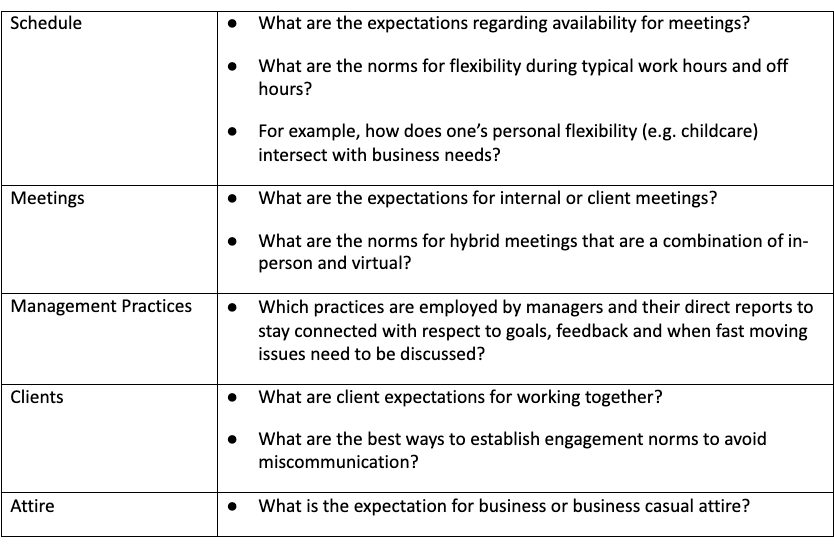 In 2020, U.S. firms had between 5-7 million job openings, even with significant fluctuations in these levels due to the pandemic’s impact across all industries. The addition of these new employees to organizations is designed to address business growth, planned turnover and the addition of needed skills and capabilities.
In 2020, U.S. firms had between 5-7 million job openings, even with significant fluctuations in these levels due to the pandemic’s impact across all industries. The addition of these new employees to organizations is designed to address business growth, planned turnover and the addition of needed skills and capabilities.
As part of the employee lifecycle, most firms’ onboarding processes include business orientation, peer partners and manager-led development plans to learn one’s new role. This organized process to bring new hires into an organization is designed to reduce time to productivity, build internal relationships and increase a sense of belonging to one’s new employer. Further, the social components of this process help to teach new hires the formal and informal rules and customs of an organization, which can have a strong correlation between starting off well and the converse.
As a human resource practice, onboarding is derived from the theories of socialization based on Edgar Schein and John Van Maanen’s research in 1979, and later built upon by Gareth Jones in 1986, to define onboarding into two main categories: institutionalized and individualized practices.
Institutional socialization emphasizes the structure and process that is provided to new hires as a way of more consistently acculturating them into the organization, whereas the individual approach focuses on employees first performing their role while learning organizational context along the way. Simply put, these distinctions are akin to “boot camp” versus a “sink or swim” approach to socializing and integrating new joiners into a firm.
With this past year’s rapid shift to remote work for an unprecedented percentage of workforce teams, managers and employees have all been forced to interact and perform tasks in new ways. The necessity for change abruptly borne out of the global pandemic hastily advanced emergent conversations about flexible work, distance learning, distributed teams and the like.
Firms quickly saw the light and made declarations ranging from not returning to the office until time frames such as 2022 to others that changed age-old traditions by announcing that employees would never have to permanently return to an office.
Reboarding
With the health crisis as a forcing mechanism, the proverbial Band-Aid was ripped off — resulting in the implementation of new, innovative ways to accomplish tasks virtually, and increased utilization of synchronous and asynchronous collaborative platforms.
These types of learning have been mostly positive, but they are juxtaposed with new issues, including lack of informal colleague interactions, the stress of work literally being in one’s home and a growing sense of isolation among permanently distributed employees. While some of these issues have been mitigated by new and creative practices, such as virtual social events and team bonding exercises, the impact has been felt across industries and firms globally.
With the more recent positive news about the availability and distribution of effective COVID-19 vaccines, the next question for organizations is: What does returning to work look like? With the learnings and newly institutionalized practices developed from our massive remote work experiment, how do organizations, teams and employees adjust to the next “new normal?” Like reboarding, onboarding is similar in its goals of planned socialization to effectively integrate into an organization. However, it distinctly focuses on existing employees who are simultaneously returning to work and adopting new norms.
The most likely reboarding options break down into a combination of the new practices applicable to all employees coupled with three categories of returning to work, which include employees working in traditional, hybrid or virtual modes to carry out their roles. This reassimilation will have implications for how firms communicate, manage and reinforce these new practices with employees in order to avoid the risk of confusion by assuming that these new norms are clear.
A roadmap for employees
The starting point for firms is to define a roadmap that summarizes the new practices and protocols that are applicable to all employees, regardless of their permanent working situation; for example, defining the daily operational changes from pre-COVID times to the new standard operating procedures. These revised methods will prioritize employee and client safety, as well new office norms to manage risks; for example, implementing new standards for formerly typical activities, such as the number of people allowed to ride in an elevator based on safe social distancing.
These changes will require communication, training, reinforcement and evaluation for ongoing learning and improvement. In large part this process is no different than any change process; however, it is distinct with respect to the focus being on well-established and engrained social norms, such as working on tasks with co-workers or how to safely hold an in-person meeting. These universal guidelines create the foundation for the organization to then structure their employee work arrangements, which may range from traditional to hybrid or fully virtual.
Molly Nagler, chief learning officer at PepsiCo, describes her firm’s focus on reboarding: “To prepare all associates to thrive in a hybrid-work environment, we are rolling out training in three areas: 1) collaboration technologies; 2) new policies and ways of working; 3) interpersonal skills. Associates need to feel supported and set up for success, so we are especially excited to offer workshops on Being Visible Virtually, Advancing Your Career in a Virtual World, and Self-Care in a World of In-Person and Virtual Work.”
Providing options for employees to return to work in these various formats will require careful consideration and answers to questions based on the organization’s business model and cultural norms. Some examples to consider include:

There are likely more questions based on the organization, current context and preexisting culture. To that end, the preparation and practices that firms design and implement to help employees return to work will inevitably affect organizations’ performance and workforce engagement and become our “new new” normal.














